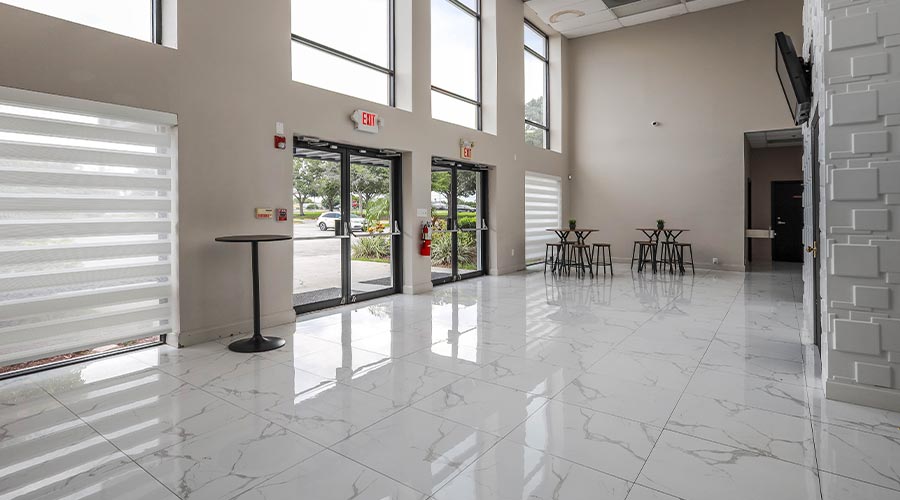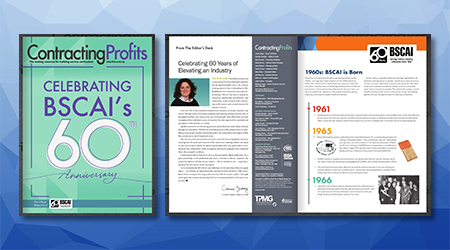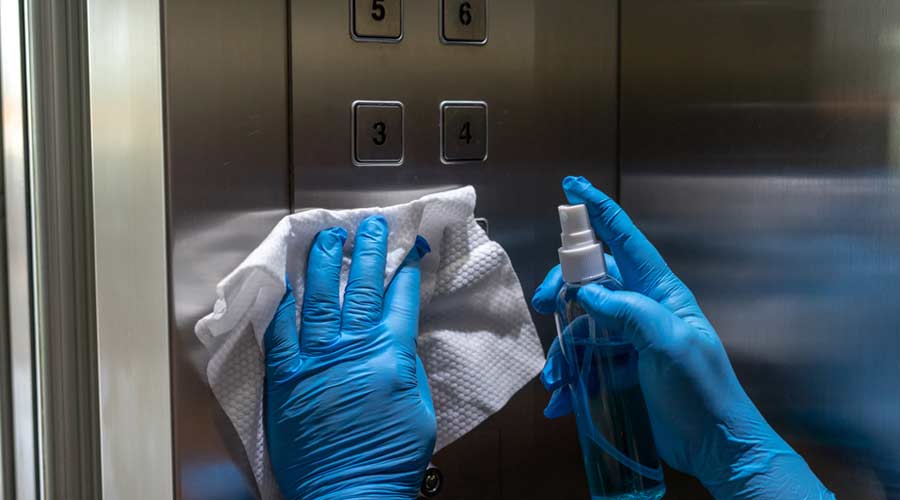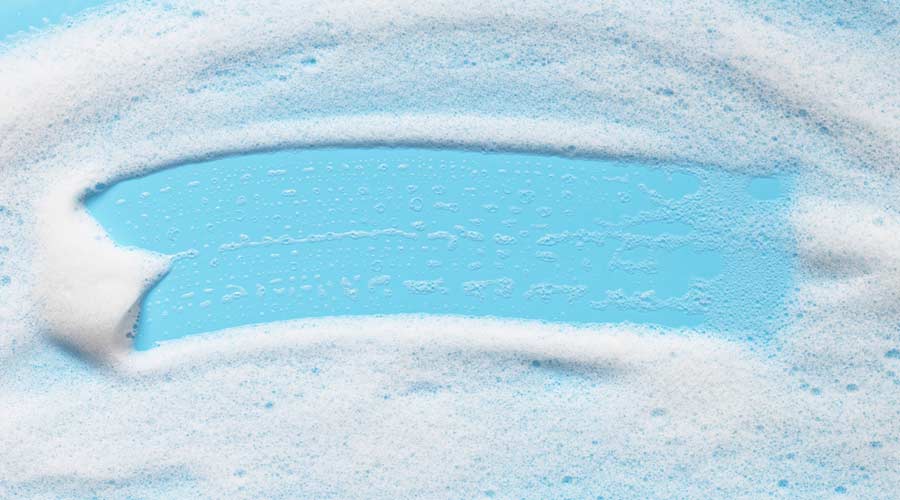
By Lauren Belskie
The way people think about commercial flooring has changed. No longer just a surface to walk on, floors are a statement piece, a performance feature, and a long-term investment that reflects a facility’s brand and operational priorities.
Businesses are placing greater emphasis on safety, aesthetics, and sustainability to meet these changing priorities. Numerous innovations like smart or low-maintenance flooring have changed the game.
Once dominated by materials like asphalt, asbestos, terrazzo, and stone, the commercial flooring industry now favors sustainable, low-maintenance products that align with modern performance and environmental standards.
From innovative materials to smarter maintenance programs, here’s what’s shaping the commercial flooring market in 2025 — and how to protect your investment for the long term.
Sustainability Drives Decisions
Sustainability is no longer a preference; it’s a priority for facilities.
Designers, architects and owners place eco-friendly options such as recycled rubber, bamboo, bio-based tiles, and low-VOC resilient flooring at the forefront when making final decisions.
In certain markets like education, healthcare, and other corporate sections, products with third party certifications such as LEED or FloorScore certifications are influencing purchasing decisions as well.
Rise of Low-Maintenance Flooring
Today’s fast-paced environment paired with labor struggles has propelled the demand for low-maintenance flooring. Facilities are increasingly choosing easy-to-clean surfaces that retain a professional appearance with minimal upkeep.
Leading the trends are LVT (Luxury Vinyl Tile) and LVP (Luxury Vinyl Plank), valued for their durability, cost-effectiveness, and design versatility.
Also rising in popularity are newer modular systems which allow for easier repairs and layout customization. These systems often look like natural wood and stone but offer superior resistance to heavy traffic and moisture.
Other popular choices include polished concrete, epoxy, and resinous flooring. Their seamless finishes, chemical resistance, and low-maintenance requirements make them a reliable, attractive option for warehouses, healthcare facilities, and high-traffic zones.
As facilities strive to reduce cleaning time, lower labor costs, and extend floor life, low-maintenance flooring solutions are becoming an essential part of modern facility design and operations.
New Materials, New Maintenance Challenges
With these newer substrates and innovations come some newer challenges. Low-maintenance flooring is often sold as “maintenance free”, and end users take that literally, causing premature wear or having dirty looking floors.
No floor is truly maintenance-free, but rather low maintenance compared to certain substrates. Without proper care, even the most advanced flooring can quickly show wear, lose luster, or require premature replacement.
Some of the most common challenges with the newer flooring are:
- Incorrect or inconsistent cleaning procedures
- Using incompatible cleaning products
- Lack of trained staff or maintenance planning
- Premature wear due to poor matting systems or delayed repairs
- Downtime during cleaning in 24/7 facilities
Introducing Ergonomic Flooring
As wellness continues to become a central focus in workplace and hospitality design, flooring that offers comfort underfoot and noise reduction — like rubber, cork, and carpet tiles with acoustic backing — is increasingly in demand. However, it should be noted that they’re less durable than the hard surfaces mentioned above.
Emergence of Smart Flooring
Technology is transforming the way facilities select and manage flooring.
Smart floors equipped with sensors can track foot traffic, space utilization, and cleaning needs. These are especially valuable in airports, hospitals, and retail environments, helping operations teams optimize their floor care plans.
While initially costly, the premise is that it will allow facilities to increase employee productivity by sending resources where traffic warrants
Building a Robust Floor Care Program
Here are some best practices when putting together a floor care program.
- Know Your Floor Type
First, identify what type of flooring you have. Many floors look alike but are made and cared for differently. Make sure you’re using the correct chemicals and equipment for the type of flooring. Using the wrong chemical or equipment can do permanent damage to the floor surface and void warranties.
2. Implement a Tiered Maintenance Program
Develop a program with daily, periodic, and restorative cleaning cycles tailored to the floor’s traffic patterns and usage. Regular maintenance prevents buildup and costly repairs.
3. Invest in Training
Educating janitorial and facilities staff on proper techniques, from pH-neutral cleaners to safe auto-scrubber use, ensures consistency and avoids unintentional damage.
4. Use Proper Matting
Matting is your floors first line of defense.
- 30 percent of tracked-in dirt is captured within the first 3 feet of matting
- 80 percent of dirt can be stopped with a 15-foot mat
- For every $1 spent on prevention, you save $10 in soil removal once inside
5. Leverage Technology
Use maintenance management software and IoT sensors to monitor conditions, track cleaning history, and predict replacement timelines — allowing smarter budgeting and total cost of ownership planning.
Final Thoughts
The commercial flooring market in 2025 is defined by innovation, performance, and practicality. Whether renovating an office, outfitting a hospital, or maintaining a warehouse, selecting the right flooring — and maintaining it properly — is essential to protecting your investment, supporting your brand, and ensuring a safe, productive environment.
By staying ahead of trends and aligning with proven maintenance strategies, businesses can extend the life of their flooring, reduce repair costs, and elevate the experience for guests who walk through the doors.
Lauren Belskie is a major contributor and the primary editor for the Imperial Dade Learning Center, a platform designed to answer common questions, provide insights on trends and offer creative solutions to help businesses create safer, healthier and cleaner facilities. She is the Marketing Operations Manager at Imperial Dade, producing articles, videos, trainings, and other educational content targeted to the janitorial services market.
posted on 10/17/2025

 Celebrating BSCAI's 60th Anniversary eBook
Celebrating BSCAI's 60th Anniversary eBook The Down and Dirty on Cleaning in Virus Season
The Down and Dirty on Cleaning in Virus Season How Surfactant Use is Expanding in Commercial Cleaning
How Surfactant Use is Expanding in Commercial Cleaning